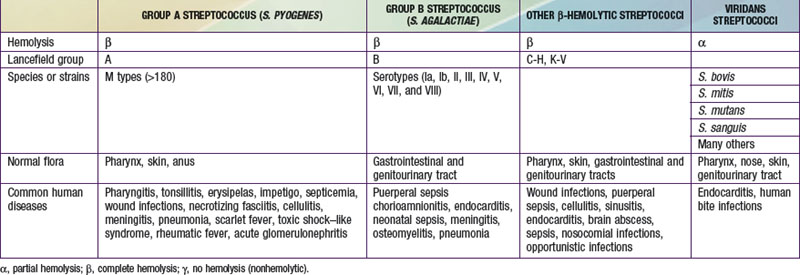Chapter 178 Non–Group A or B Streptococci
The genus Streptococcus comprises >30 species. Streptococcus pneumoniae (Chapter 175), group A streptococcus (Chapter 176), and group B streptococcus (Chapter 177) are the most common causes of human streptococcal infections. The β-hemolytic streptococci of Lancefield groups C to H and K to V and the α-hemolytic streptococci that cannot be classified within a Lancefield group (the viridans streptococci) commonly colonize intact body surfaces (the pharynx, skin, gastrointestinal tract, genitourinary tract) and also cause infections in humans (see Table 178-1 on the Nelson Textbook of Pediatrics website at www.expertconsult.com ![]() ). Of the non–group A β-hemolytic streptococci, groups C and G streptococcus are the most frequent cause of human disease. The enterococci were once classified among the group D streptococci but are now a separate genus, Enterococcus (Chapter 179).
). Of the non–group A β-hemolytic streptococci, groups C and G streptococcus are the most frequent cause of human disease. The enterococci were once classified among the group D streptococci but are now a separate genus, Enterococcus (Chapter 179).
Table 178-1 RELATIONSHIP OF STREPTOCOCCI IDENTIFIED BY HEMOLYSIS AND LANCEFIELD GROUPING TO SITES OF COLONIZATION AND DISEASE

Stay updated, free articles. Join our Telegram channel

Full access? Get Clinical Tree


